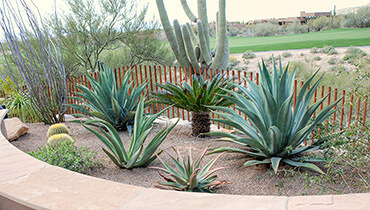
Climate change is real and has affected the local weather which has dramatically changed since we moved to Tucson a decade ago. Let’s begin with last summer. It was one of the hottest and driest on record. We usually have a summer monsoon during July and August. The desert flora get to stock up on water and the rain somewhat cools things down; not so in 2020. In contrast to most days in the past being around 100° with occasional hotter spells we were routinely hitting 105° with 110° on occasion. And the moderating monsoon—forget about it. Very little rain fell, incidentally setting up conditions that were perfect for our Bighorn fire that wiped out acres of forest in the mountainous areas west of Tucson. These conditions stressed cacti and trees; the strain of the unabated sun and heat caused many beautiful agave plants to lose fronds or, in many instances, actually die.
The dryness persisted through the fall and winter. We got only sporadic showers and brief, light rains. I’ve actually resorted to watering our many agave plants as they seem to be the most vulnerable; never had to do that before but I’m not willing to lose them. I’ll keep this up until, and if, the rain picks up sufficiently.
For my wife and me the anticipation of a repeat of last summer is incentive to travel during the hot months, regionally or internationally, if the Covid pandemic abates sufficiently to allow this to be done safely. Other than the summer, the other eight to nine months, while dry, were the usual delight. Nights in the 30s and 40s with sunny days mainly in the 60s or 70s and clear blue skies.
The big picture is that Tucson is still a delightful place to call home but behavior—need for some watering of plants and more travel during the summer—will need some tweaks from the past.
